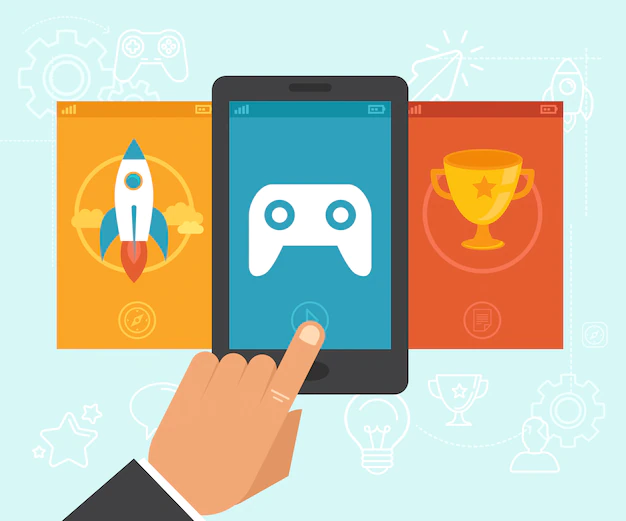Introduction
Mobile app gamification is a user-centered method for increasing app engagement and traffic. This blog discusses how gaming elements add value to a mobile app and increase user retention. Mobile App Development Company Gamification encourages users to return and try the app again because it is all about bringing fun elements from games into the tech world.
This strategy has a significant impact on human behavior by making things more exciting and enjoyable for users. So, let’s examine why you should use mobile app gamification for your product and how to gamify your app!
Why You Need Mobile App Gamification
Gamification is a marketing strategy that employs game methods such as social interaction, competition, leaderboards, progress displays, and rewards. Gamification is a guide that directly increases users’ interest in using your product because people are more willing to complete tasks when they know they will receive a reward at the end.
Changing the user experience into a game can significantly increase user engagement and motivate users to interact with the app more frequently. More than you can imagine, the winning scope influences user behavior. This method can help both a business owner and an individual achieve their objectives.
How Does Gamification Work?
Gamification is an excellent marketing technique if you want a user to complete a task that he may refuse to do, or if you want to engage more users with your app and please them with various rewards. This delights users, and they may spread the word about your app as well.
Let’s get to the part where we talk about how gamification works!
What to Keep in Mind When Creating a Successful Mobile App Gamification Strategy
Although app gamification has many advantages for businesses, it does not guarantee the success of your company. At the same time, it could be very useful for business. As a result, you should consider all potential challenges and risks that could prevent you from meeting your business objectives.
Here are some things to keep in mind when developing a successful mobile app gamification strategy:
1. Determine Your Goals and Check Their Status
If you want to use a solution, you must have a reason for doing so. So, understand that purpose from the beginning, remember it, and stick to a strategy; otherwise, your functions will not yield the best results.
Create your app gamification strategy while keeping your users’ and your own needs in mind. Make an effort to meet both needs.
2. Recognize and Always Evaluate Your Target Audience
It will not work unless you develop a mobile app gamification strategy based on the interests and needs of your target users. Data can help you figure out who is interested in your product, how he or she behaves, why something is happening, and how to make it work for you.
3. Find something valuable to your users and incorporate it into the app.
Even if you know something will work as you prefer it, that doesn’t mean your users will agree with you; they may have their own preferences.
Find out what users prefer, what motivates them to complete the task, and why they prefer your app over others.
4. Keep It Simple but Unique
You don’t have to completely redesign your app to make it gamified. If it does well, you can simply add some unique gamification features to it. Don’t perplex yourself or your users with complicated tactics, systems, and approaches. The game rules you provide to others must be simple to understand and adhere to. You should not irritate your users.
5. Make It Interesting
The success of your app’s gamification is directly related to the users’ experience while using the app. Your users will be happier if it is enjoyable, entertaining, and playful. It will entice them to learn more about your app.
Duolingo, a language learning app, for example, has used a set of gaming interactions to make things fun and exciting for users.
6. Motivate Users to Share
Everyone wants shares and likes, including businesses. So, make all users proud of their achievements while using your app and allow them to say “thank you” with a social media share. Communicate with your audience via Instagram, Twitter, Facebook, and other social media platforms.
7. Pay Attention to Your Customers
Pay attention to what your users have to say: what they have to complain about and what they have to praise about your app. This provides a clear picture of what to keep, change, and improve.
Tools for Gamification
Most developers use Amazon GameCircle, Apple’s Game Center, and Google Game Services, but you don’t have to use these tools to create your app. These are primarily used for game development, but any mobile app gamification can make use of some of the features provided by these libraries.
These tools make it simple to add virtual goods, rewards, leaderboards, badges, and other gamification elements to your app.
Guide to Mobile Application Development Life Cycle
Final Thoughts
Gamification assists users in achieving their goals and improving their skills. To apply the same strategy to your product. If you do, you will be able to easily retain your users, scale your business, and gain new clients. Furthermore, Cubix can control the entire Gamification network in your office space with the touch of a button. Without a doubt, the fate of mobile app gamification development might very well bring better solutions if app development organizations can get it right.


